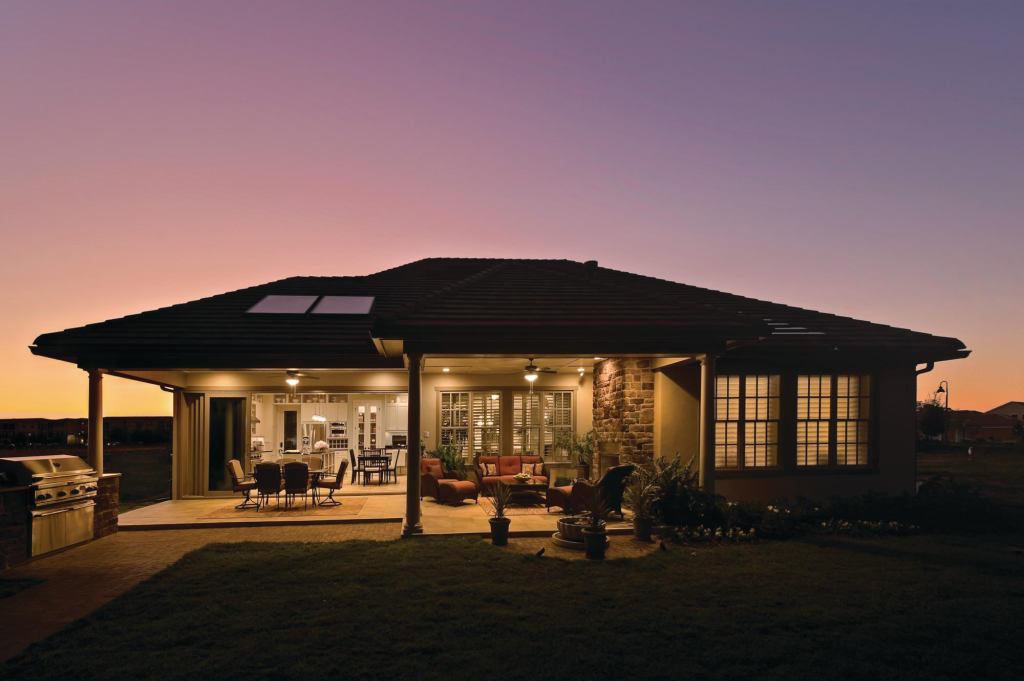Architecture can be traditional without feeling stuffy or pompous. The GreenHouse shows how. Designed in the spirit of Martha Stewart’s personal residence in Bedford, N.Y., it’s tasteful yet simple, with clean lines and plenty of connections to the outdoors. Large windows, 9-foot-4-inch-tall ceilings, crisp crown molding, and painted wood paneling make the interiors feel luxe and substantial, even if they aren’t big. And the plan isn’t overly prescriptive, so homeowners can choose how they wish to furnish and use its spaces.
“I like a home to be suffused in natural light and airy, with a generous amount of open space,” says the legendary founder of Martha Stewart Living Omnimedia and leading authority on all things domestic. Delivering on that vision, the heart of the home is a large entertainment area that blends dining room, great room, kitchen, and patio into a succession of fluid spaces.
But beauty is only part of the story. Placing functionality on par with aesthetics, the plan is also big on multitasking. Its flexible den can double as a home office, playroom, media room, or extra bedroom. A kitchen workstation provides a great spot for homework or paying bills, but is also command central for the home’s energy monitoring system, a Web-based tool that allows homeowners to track their electric, water, and propane consumption, as well as solar energy production.
And yet the GreenHouse makes a few unorthodox moves that run counter to the current conventional wisdom about building smaller. For example, it keeps its formal dining room (a space that’s been value-engineered out of many of today’s smaller homes) and allocates a larger-than-average share of square footage to storage. Built-ins are pervasive, the secondary bedrooms have walk-in closets, and the master suite assigns almost as much space to its dressing area as it does to the master bath.
This isn’t complete folly. Setting aside square footage for storage actually results in rooms that feel larger, Stewart says, because they aren’t cluttered with armoires and other bulky case goods. “The dressing area off the master bedroom has built-in cabinets and drawers to create storage space for clothing. That eliminates the need for dressers in the bedroom,” she points out.
